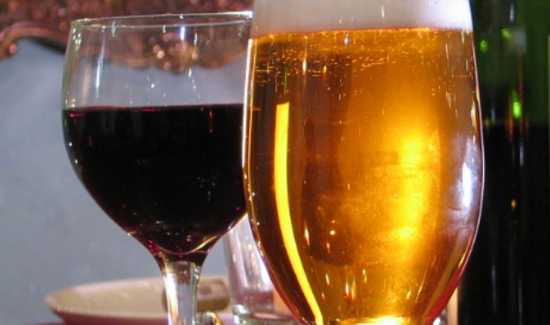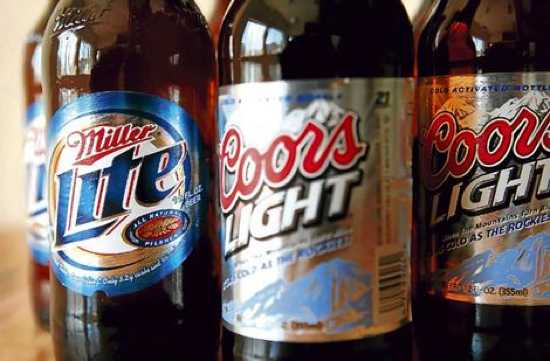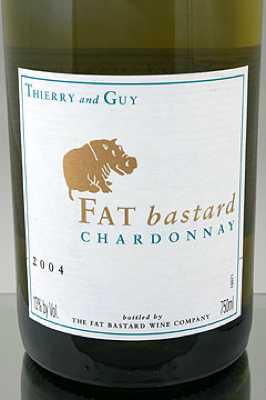 Creepy
Creepy  Creepy
Creepy  Humans
Humans 10 Things Humans Are Weirdly Bad at Predicting
 Sport
Sport 10 Outrageous Horse Racing Scandals
 Technology
Technology 10 Cutting-Edge Government Programs’ Strange Projects
 History
History 10 Worst Political Marriages in History
 Music
Music Top 10 Strangest Songs to Have Hit Number One
 Food
Food Ten Offbeat Science Experiments Involving Food
 Miscellaneous
Miscellaneous 10 Critical Bottlenecks in Modern Civilization Posing a Major Risk
 Animals
Animals 10 Strange Animals You Won’t Believe Actually Exist
 Miscellaneous
Miscellaneous 10 Times Product Placement Spectacularly Backfired
 Creepy
Creepy Ten Formidable Bugs and Insects That Scientists Recently Discovered
 Humans
Humans 10 Things Humans Are Weirdly Bad at Predicting
 Sport
Sport 10 Outrageous Horse Racing Scandals
Who's Behind Listverse?

Jamie Frater
Head Editor
Jamie founded Listverse due to an insatiable desire to share fascinating, obscure, and bizarre facts. He has been a guest speaker on numerous national radio and television stations and is a five time published author.
More About Us Technology
Technology 10 Cutting-Edge Government Programs’ Strange Projects
 History
History 10 Worst Political Marriages in History
 Music
Music Top 10 Strangest Songs to Have Hit Number One
 Food
Food Ten Offbeat Science Experiments Involving Food
 Miscellaneous
Miscellaneous 10 Critical Bottlenecks in Modern Civilization Posing a Major Risk
 Animals
Animals 10 Strange Animals You Won’t Believe Actually Exist
 Miscellaneous
Miscellaneous 10 Times Product Placement Spectacularly Backfired
10 Interesting Facts About Beer and Wine
Beer and wine have been called many things: delicious, evil, holy, unholy, addictive, and so on, but there is no doubt that one of the most beloved of all human inventions is beer and wine. Therefore, you should know more about it, and thus this list was born: 10 Interesting Facts About Beer and Wine.

This item may be familiar to most avid Listverse readers and has been presented on numerous lists, but I found that I still had to have it in somewhere, as there seems to be the instant stereotyping of relating wine and beer to unhealthiness. However, over the course of a ten year study, wine, and specifically red wine, has been found to possess great cardiovascular benefits (aka: it helps your heart!). This has been attributed to antioxidants called flavonoids, which are present in the skin and seeds of grapes, and reduce the risk of heart disease by improving cholesterol and lowering blood clotting. Further studies have even shown that red wine may inhibit the growing of tumors for certain cancers and assist in the treatment for neurological disorders like Parkinson’s disease and Alzheimer’s. However, despite all this, and as with any food or drink: do not over-consume. Experts say for men to drink two servings of red wine a day, and for women, one (a serving is 4 ounces) in order to experience maximum benefits.

The age at which people can legally drink varies from country to country, continent to continent. In most of Europe the drinking age is set at 16, in Canada it is 18, Asia 20, and of course, it is 21 in the United States. The three top beer-consuming countries per capita are the Czech Republic, Ireland, and Germany; the three top consuming countries of wine are Italy, France, and Switzerland; the three top producers of beer are China, the United States, and Russia, however it should be noted that Germany has the largest number of breweries in the world with about 1,200 (USA only has about 350); and finally, the top three producers of wine are Italy, France, and Spain. On another interesting note, the top three countries with the highest tax rates on beer are Norway, Finland, and Canada.

This was difficult to research, as this is a heated topic of debate and multiple countries claim to reign supreme in producing the most delicious beers for consumption. The European Beer Star awards breweries with the most impressive beer based on taste and quality, and the most recent results came out with Belgium ranking as #1, followed behind by Germany and the United States. These results interestingly contradict the results of the next entry…

In a survey conducted in over 80 countries, 2,000 people were questioned on which countries have the world’s worst beer. The results listed the United States as #1, followed behind by China, the United Kingdom, Australia, France, and Italy. Budweiser was ranked as the #1 worst brand in beer by the takers of the survey, however it should be noted that the USA received gold awards for 50 of their brands and breweries of beer, none of which include Budweiser. This is due in part to the fact that Budweiser is relentlessly advertised, and people seem to believe this is THE beer of the United States, as it is the most widely available and distributed beer in the world. Fortunately, even though it is second in American beer consumption (Bud Light ranks first), the USA definitely has other good brands, such as the Sierra Nevada Pale Ale, the Samuel Adams Boston Lagers, and the Samuel Adams Seasonal.

The number one world-renowned region responsible for producing the world’s highest quality wine is Bordeaux, France. It consists of 284,320 acres of the best vineyards available. The region can make up to 960 million bottles of wine per year, ranging from everyday table wine to some of the most expensive wine in the world, with brands like the Chateau d’Yquem and Chateau Cheval Blanc selling for tens of thousands of dollars. A 1947 bottle of the last wine listed (I don’t won’t to write it again) was sold at auction by Christie’s in Geneva – being previously owned by a Swiss collector – and is considered to be the greatest bottle of wine Bordeaux has ever produced. The cost? $304,375.

Breweries and manufacturers are constantly adapting and changing to the huge number of consumers who drink beer today, and will often try to invent innovative ideas for expanding their revenues and fan-base. Sometimes, however, breweries take this a little too far, such as in Cambodia, a popular beer is a Tarantula Brandy, containing rice liquor and “flavored” with dead tarantulas. Another example would be the Korean Baby Mouse Liquor, which is made with distilled rice spirits, blended with dead mice, and fermented for one year. Yet another example of bizarre beers is the Kwispelbier brand, produced from a small brewery in the Netherlands, and advertised as “a beer for your best friend.” Yes, it is a non-alcoholic beverage designed for dogs after Gerrie Berendsen, the inventor, wanted to refresh his dog after a day out hunting.

Swinging back over to some more facts about wine, these are some of the most bizarre, and perhaps offensive, brand names given to wine. One is a French wine produced and distributed by the British. Its name? Fat Bastard. Another is the Australian brand called Bitch, and as an added joke the name is printed 77 times on the back of the bottle for the lucky drinker. Other names is the French brand (Oops) (yes it is in parentheses, and now I am explaining that in parentheses), which was named so because the grape type was mislabeled for years on the original bottle, so the humorous producers decided to call it (Oops). More bizarre wines from France are the La Vin de Merde (Wine of Shit), the Elephant on a Tight Rope brand, and the delicious Frog’s Piss.

Yes, despite all the praise and admiration, beer of course still has its ill health effects. One such is dubbed “beer belly,” in which over consumption has been shown to increase obesity rates in men. The drink harbors strong stimulants of gastric acid secretion and can cause gastro esophageal reflux, aka heartburn. Beer can also lead to an increase in blood pressure, as well as causing dehydration (beer is a dehydrating agent, even thought people often drink it after a hot day or work), and it acts as a downer, reducing activity in the central nervous system and leading to a hangover. It also has many well known negative effects on the liver and can cause liver cirrhosis after prolonged and heavy drinking. And finally, one of the deadliest effects drinking has is the impairment of driving skills, as motor accidents are the #1 cause of death for adolescents and cause up to 40% of US accident-related deaths every year.

– Over half the hospitals in more than 65 of the largest metropolitan areas of the United States reported that they offer alcoholic beverages to their patients.
– Alcoholic beverages often contain no fat or cholesterol, but have a high concentration of calories.
– In the United States Pharmacopeia, alcohol is listed as a medicine.
– All 13 minerals necessary for human life can be found in alcoholic beverages
Hangovers in other languages:
– The French call it ‘wood mouth.’
– Germans refer to it as ‘wailing of the cats.’
– Italians call it ‘out of tune.’
– Malaysians call it ‘lo.’
– Norwegians identify it as ‘carpenters in the head.’
– Spaniards call it ‘backlash.’
– Swedes refer to it as ‘pain in the hair roots.’
Methods to “curing” hangover include:
– Ancient Greeks ate cabbages.
– Ancient Romans ate fried canaries.
– Some present day Germans eat a breakfast of red meat and bananas.
– Some French drink strong coffee with salt.
– Some Chinese drink spinach tea.
– Some Puerto Ricans rub half a lemon under their drinking arm.
– Some Haitians stick 13 black-headed needles into the cork of the bottle from which they drank.
– Russians drink Vodka.

According to the Discovery Channels hour-long documentary called “How Beer Saved the World,” beer was responsible for the birth and development of human civilization, and is the “greatest invention of all.” It outlines how the agriculture revolution was started because of the need to make beer, which led to many inventions such as the plow, the wheel, and irrigation. Cities were built in an effort to produce more beer for the growing number of people who craved it. Other lesser known inventions were math, which needed to be mastered by farmers as their fields grew and needed to be quantified, as well as written language, which was vital to keep records of the expanding beer trade. The documentary goes on to demonstrate that every invention, innovation, and milestone of human history was, at the core, because of the human love for beer.








